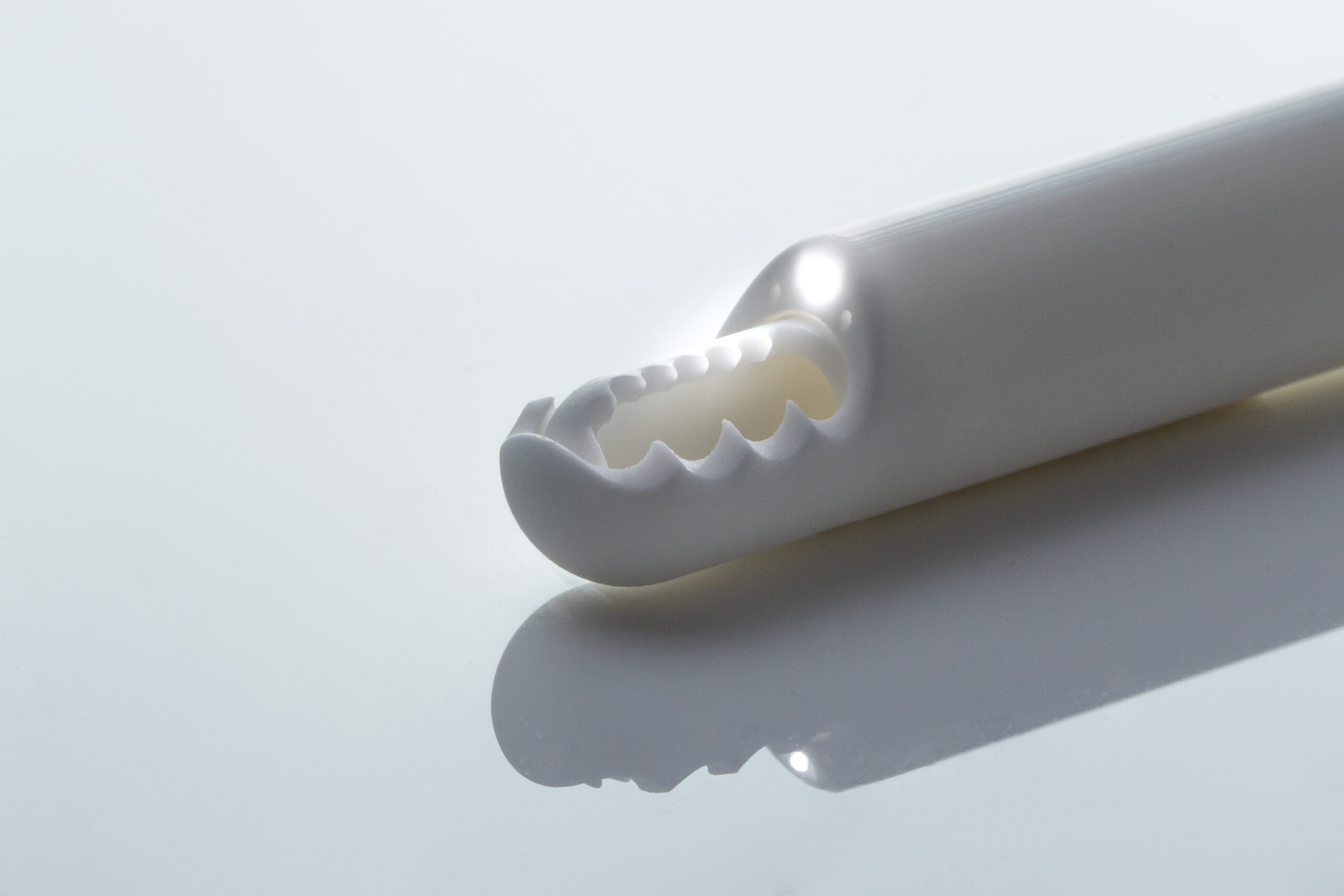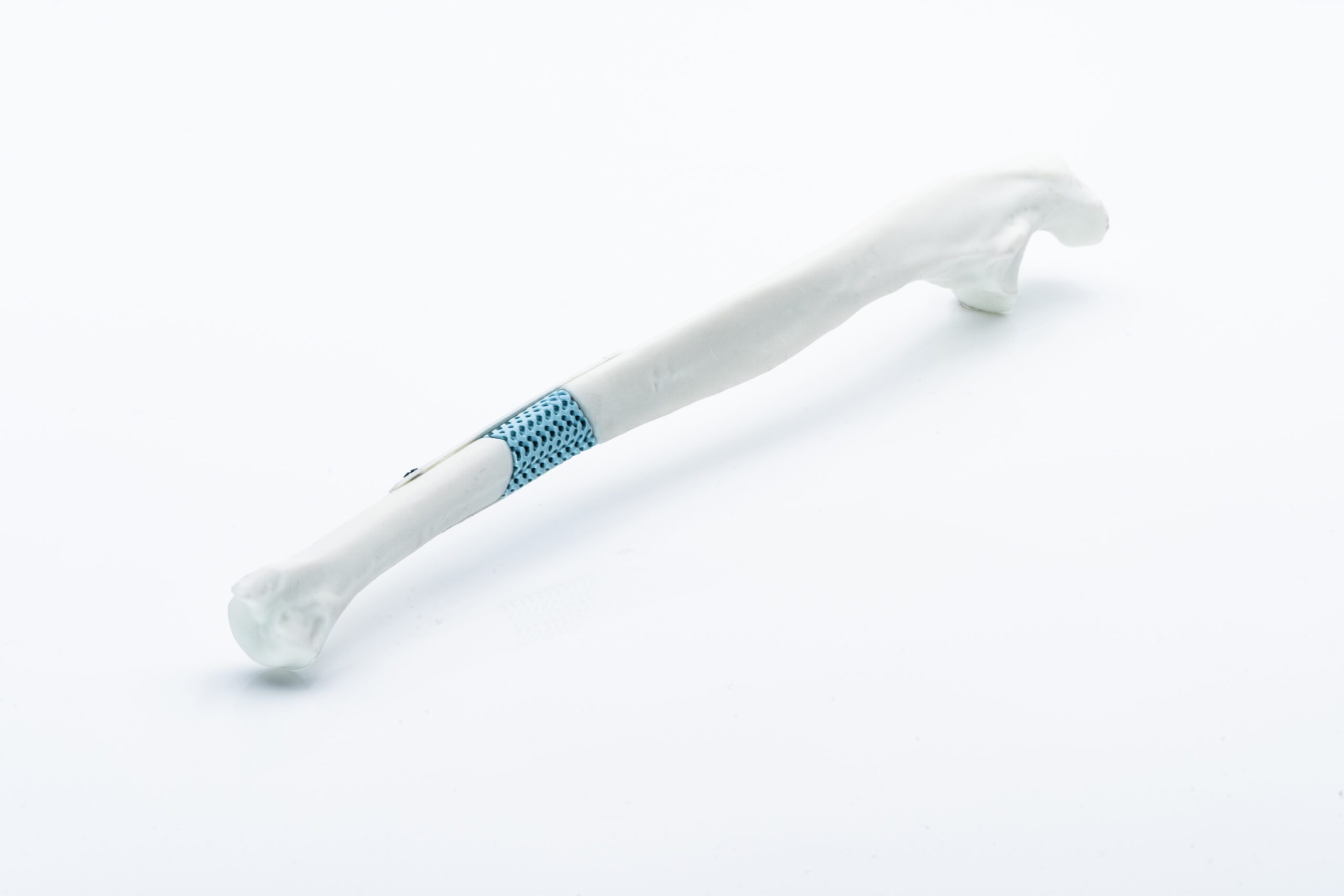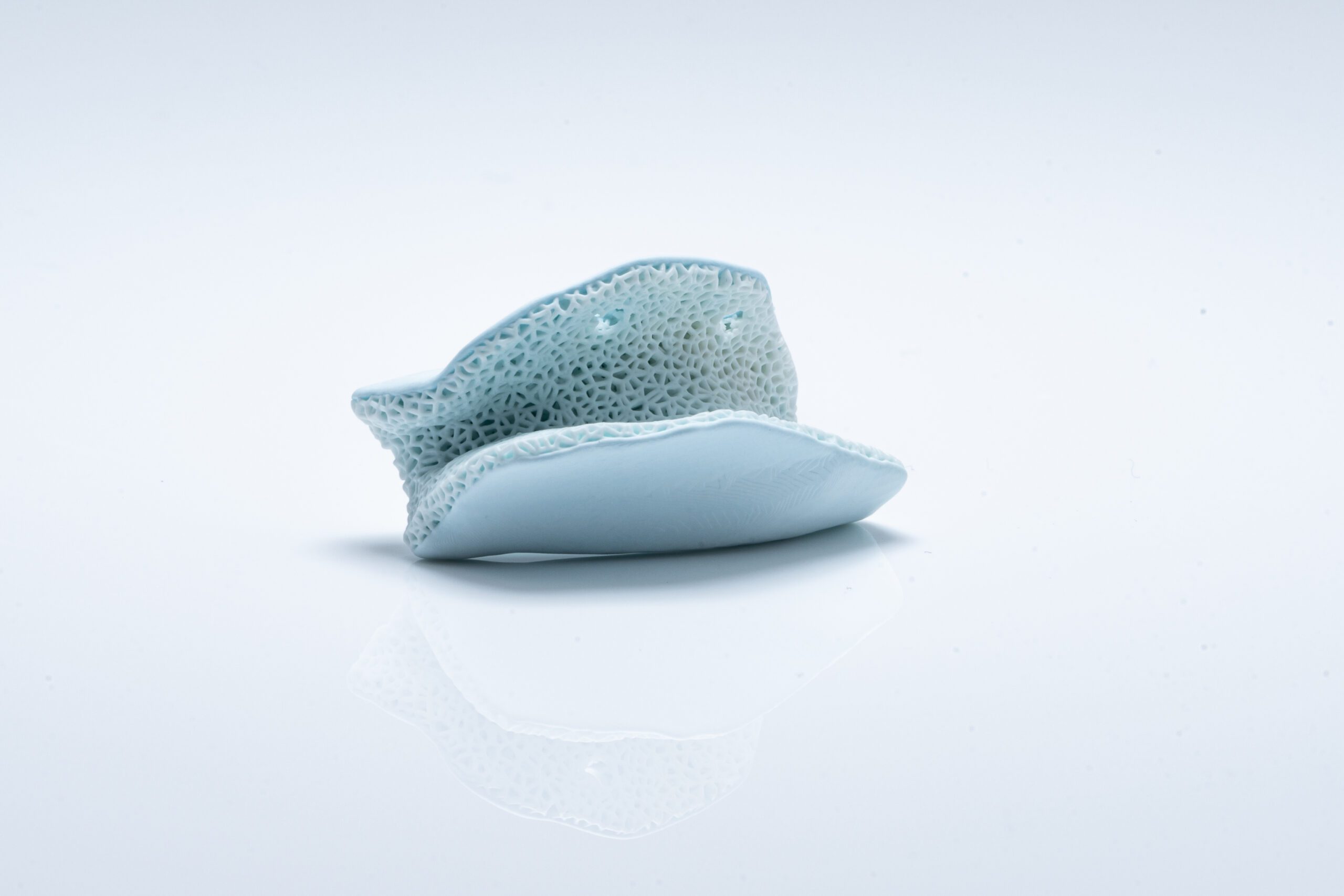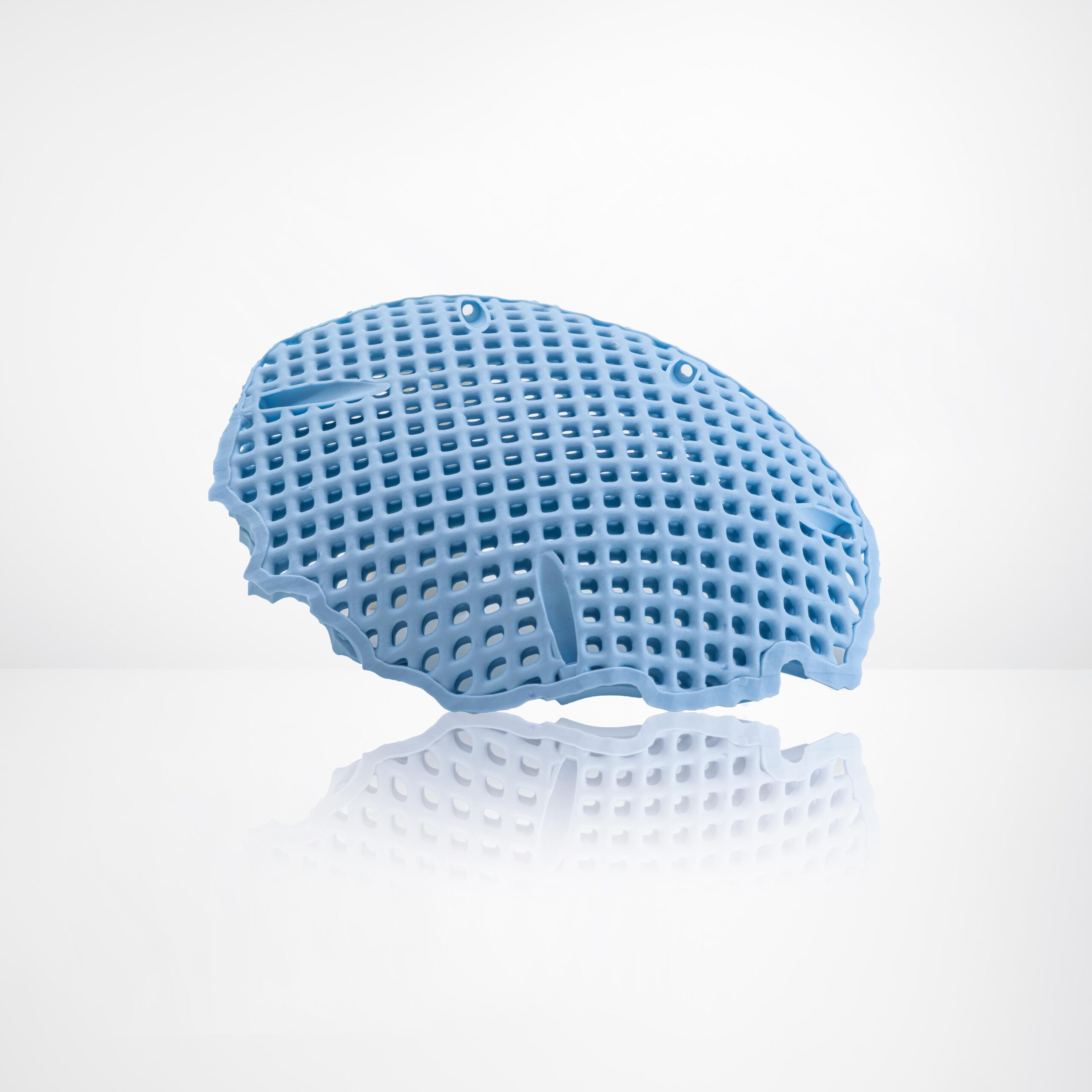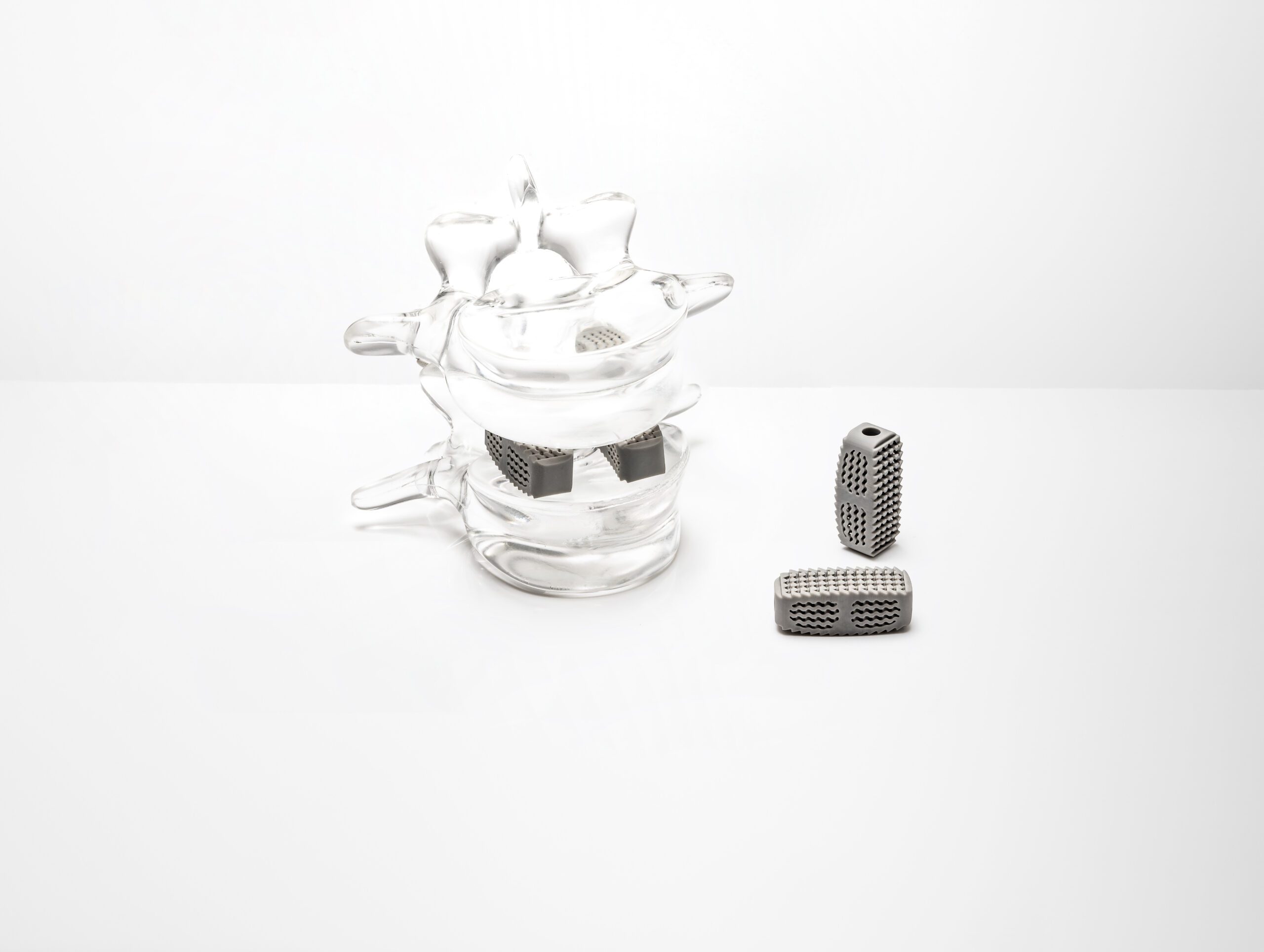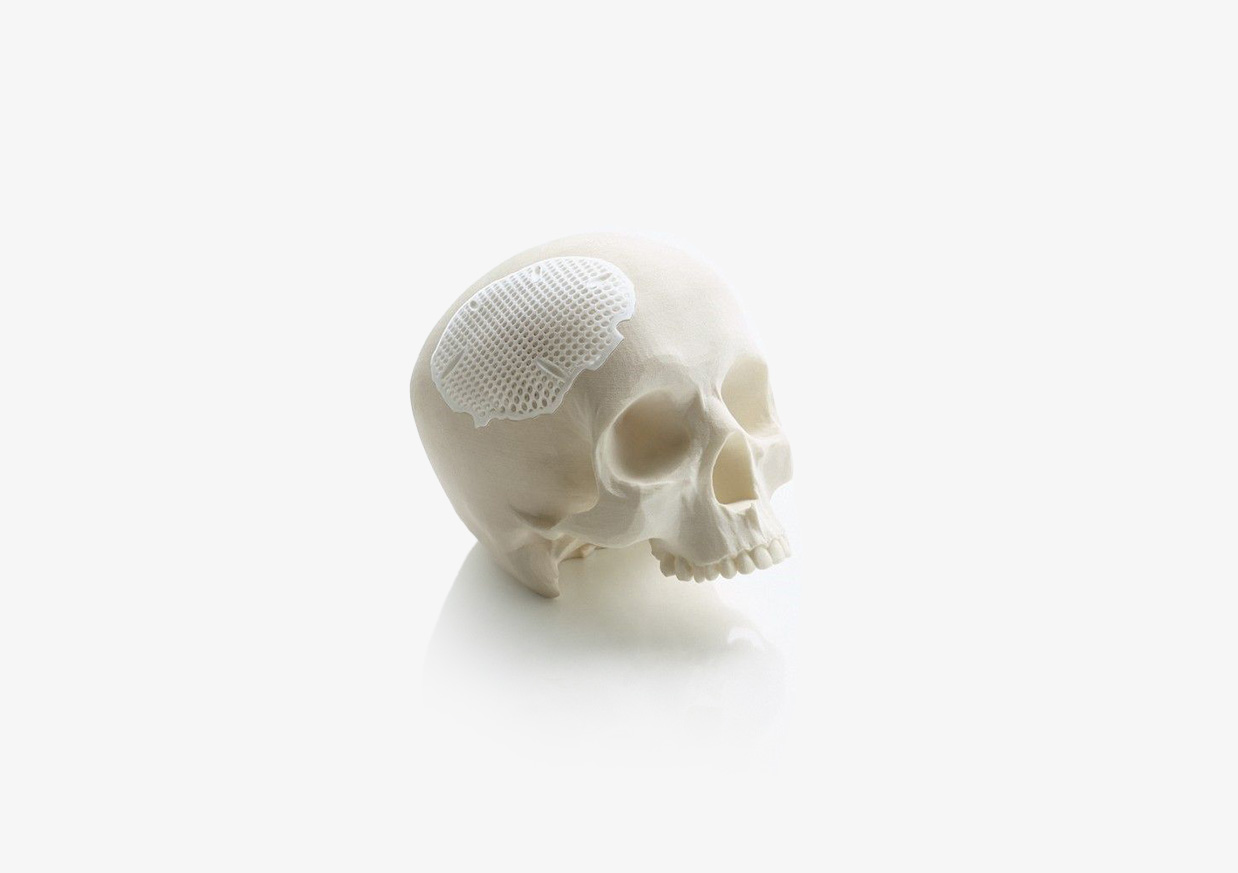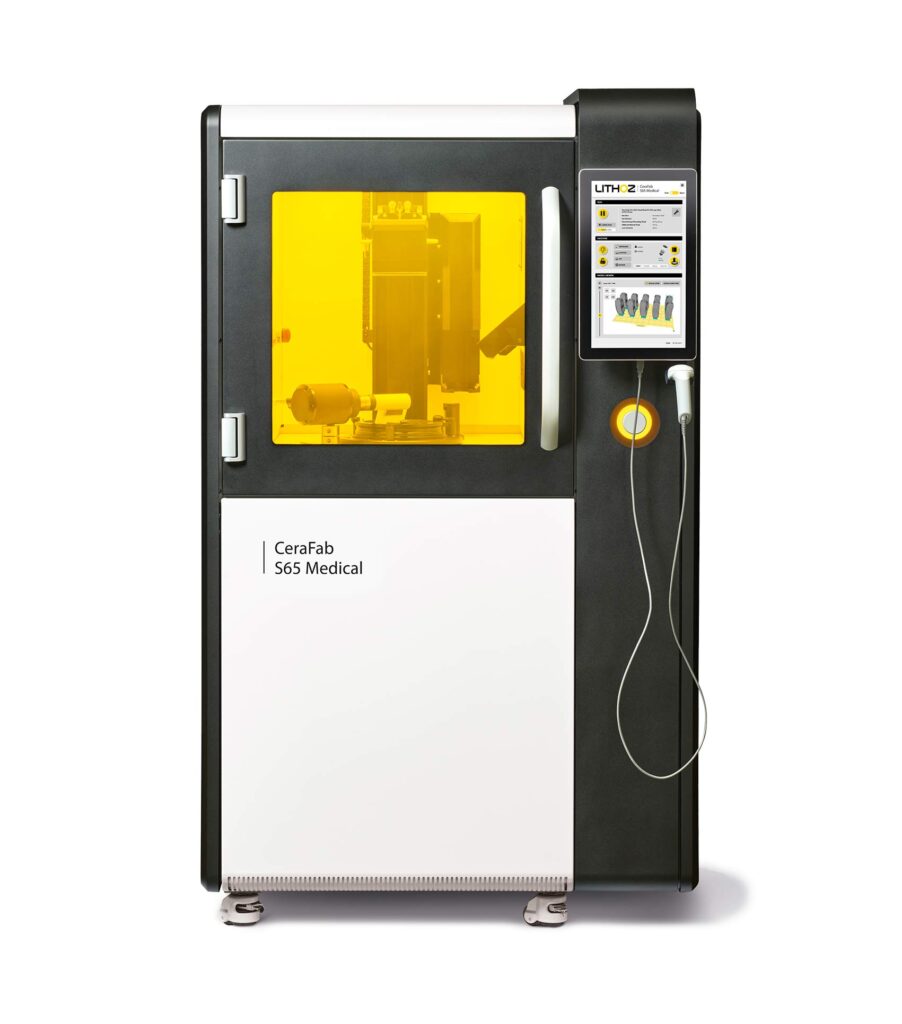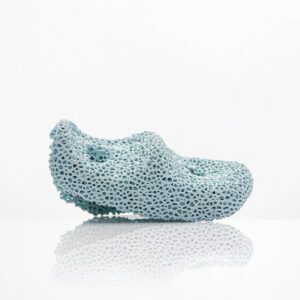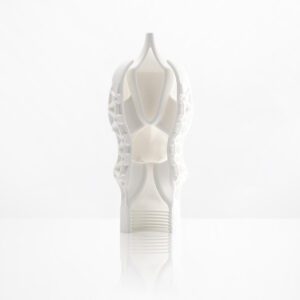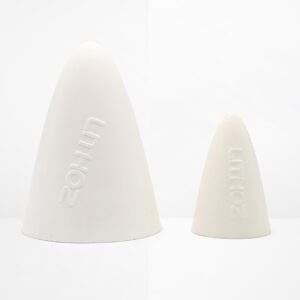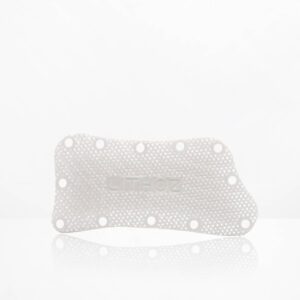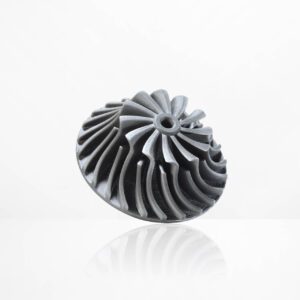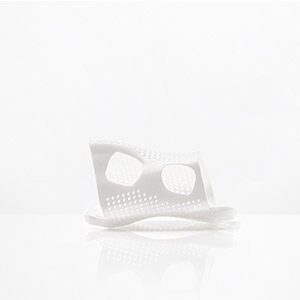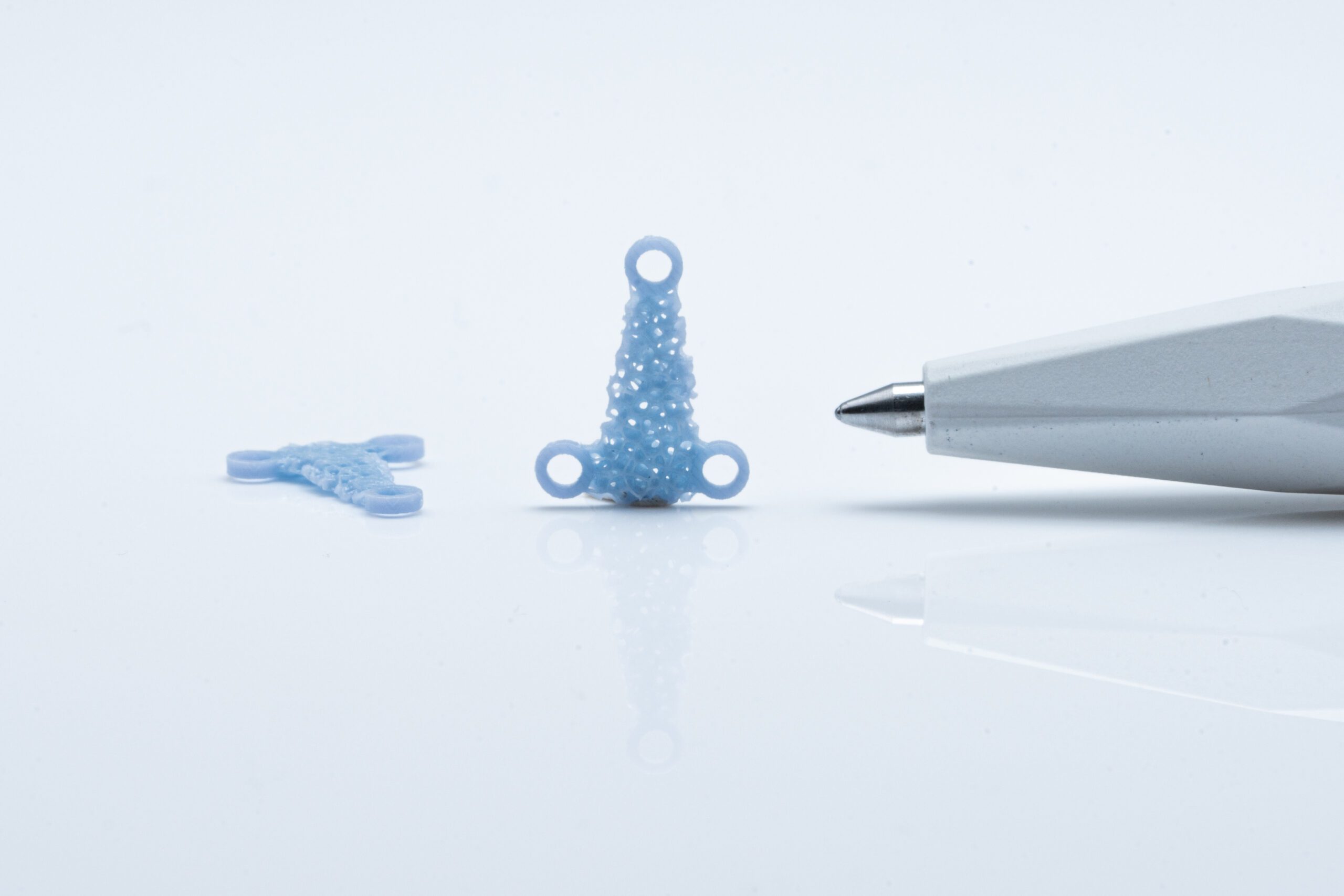
Palatal obturator
Cleft palates are among the most frequent congenital diseases in the western world. Roughly, 1 in 1000 children suffer from an underdeveloped palate at birth, resulting in a pathological opening in the hard and soft palate and sometimes causing compromised lip structures. This disease can range from an incomplete defect in the soft palate to a bilateral complete lip and cleft palate. Patients suffer from frequent infections due to germs that can enter the adjacent tissues from the mouth, as well as experiencing speech and respiratory difficulties and psychosocial issues.
Current treatment options involve a temporary palatal obturator for the cleft palate and surgery for the cleft lip. However, these options are often inadequate as they do not permanently solve the underlying issue.
Researchers and companies have developed a new treatment option based on resorbable ceramic materials to replace the missing bone in the palatal area and combine it with soft materials to help the closure of the oral mucosa. Patient-specific designs and interconnected open porous geometries, in combination with established materials like hydroxy apatite and tricalcium phosphate, can guarantee a complete healing of the congenial bone defect and thus improve childrens' lives.

